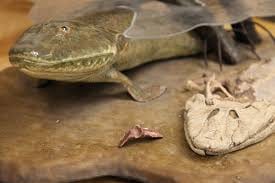How did the discovery of DNA prove that Darwin’s theory of evolution was correct and how does it change the way we view evolution today and into the future?
Michael Nackman of the University of Arizona studied how some of the Pincate Desert’s pocket rock mice evolved to blend in with volcanic rock. A mutation in the mouse’s DNA changed its fur colour from light to dark. Now, rock pocket mice exist with light or dark fur.
https://uanews.arizona.edu/story/coats-different-color-desert-mice-offer-new-lessons-survival-fittest
Sean Caroll studied why one fruit fly species has spots on its wings, but another does not when the two species both have the spot-coding gene. One DNA portion differed in the spotted fly. Injecting this DNA portion into the non-spotted fly resulted in spotted wings. These DNA portions are called switches, and they activate and deactivate genes.
 https://hort.uwex.edu/articles/spotted-wing-drosophila/
https://hort.uwex.edu/articles/spotted-wing-drosophila/
David Kingsley and Dolph Schluter studied why the ocean stickleback has spikes on its belly, but the lake stickleback does not. A mutation in the lake stickleback’s DNA broke the switch that activates the spike-coding gene. The gene that codes for the stickleback’s spikes also codes for hind legs in other animals.
https://learn.genetics.utah.edu/content/selection/stickleback/
Arkhat Abzhanov and Cliff Tabin studied how the Galapagos finches have different beaks by looking at the birds’ embryos. The birds had the same beak-coding genes, but they differed by how much and when the switch activated the gene.
https://en.m.wikipedia.org/wiki/Darwin%27s_finches
Neil Shubin of the University of Chicago studied how fish evolved to walk on land. He found a fossil of a flat-headed fish with leg-like fins. They had the same bone structure as the limbs of all other four-legged animals. In the paddlefish, a relative of the fossil Tiktaalik, the same genes code for fins as they code for limbs in humans. A few mutations changed the ancient fish’s fins to limbs.
https://phys.org/news/2014-01-discovery-tiktaalik-roseae-fossils-reveals.html
Through the study of DNA, scientists have discovered that mutations in the genome cause evolutionary change. Switches in an organism’s DNA activate and deactivate hox genes that code for physical features. Mutations can affect these switches, therefore affecting the organism’s physical features. This proves that Charles Darwin’s theory of evolution was correct. We can now discover how almost any organism differs from another, and how it evolved and came to be.
Sources
• What Darwin Never Knew notes & transcript



